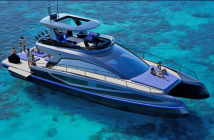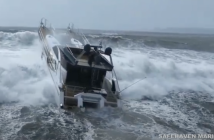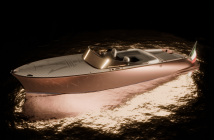AIS is one of those things that a lot of us now take for granted. It’s a good thing, like GPS or radar or sunscreen. It can protect you and make your life on board safer and happier. It’s also easy to understand and easy to use, and it’s relatively inexpensive; an ICOM AIS transceiver costs $699.99 at West Marine.
The whole point of AIS (Automatic Identification System) is to let other boats know where you are (and to tell you where they are). It is designed to prevent collisions at sea, or around river bends on the Great Loop, or when you’re moving through a crowded waterway.
Under U.S. and international regulations, almost all ships are required to carry AIS. Almost all U.S. Navy ships have AIS, but they often do not turn it on, since they often want to keep a low profile for operational security reasons.
Two US destroyers, however, have been involved in deadly collisions recently. The USS John S. McCain, pictured above, was in a collision off Singapore that killed ten sailors, and the USS Fitzgerald was in a collision off the east coast of Japan that killed seven.
In a recent hearing, members of a Senate committee looking into the collisions asked Admiral John Richardson, the Chief of Naval Operations, if warships in heavily trafficked areas would lose any operational security by turning on AIS. “You look outside and see the ship,” he said, “so it’s not an operational security standpoint.” The Admiral ordered ships in crowded areas to make sure their AIS was on and working. For more:
CNO: U.S. Navy Ships Told to Turn AIS Transmitting ‘ON’ in High-Traffic Areas




